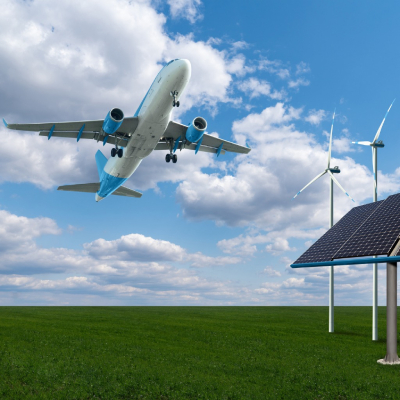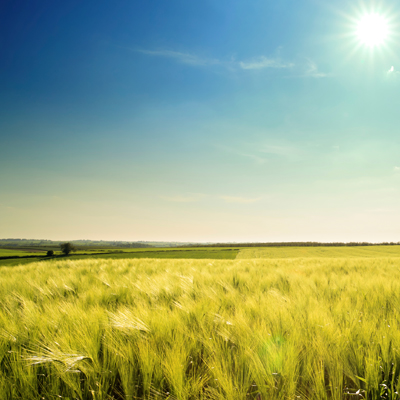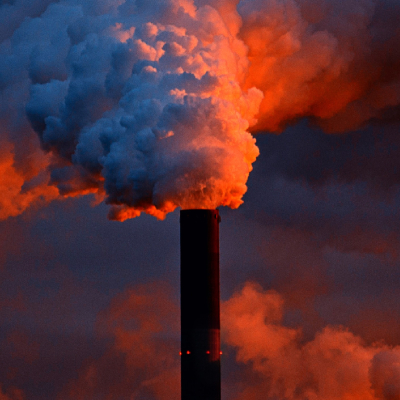Contact Professor Neil Harris
- Tel: +44 (0) 1234 758155
- Email: neil.harris@cranfield.ac.uk
- ORCID
Areas of expertise
- Air
- Biomass and Waste
- Energy and the Environment
- Environmental Impacts
- Environmental Policy
- Monitoring and Environmental Informatics
- Natural Capital
- Space Systems
Background
Neil is experienced in the international coordination of atmospheric research and in ensuring that the understanding gained is transferred to the policy and public fields. He was co-chair of the Stratosphere-troposphere Processes and their Role in Climate of the World Climate Research Programme (2014-2022) and is now a member of the WCRP Safe Landing Lighthouse promoting understanding of what a safe climate is and how we avoid the many pitfalls in maintaining it. He has been involved in many international assessments of ozone depletion and climate change. He was awarded the NERC 50th anniversary International and the Overall Impact Awards for our role in successful development of the Montreal Protocol on Substances that Deplete the Ozone Layer. Neil has a BA in Chemistry from Oxford University and a PhD from the University of California at Irvine. He was appointed Chair in Atmospheric Informatics in April 2016.
I have started a blog on climate and science issues which reflects my personal views: https://climatethoughts320711548.wordpress.com/blog/.
Research opportunities
A wealth of measurements exists that has been collected in monitoring networks, during focussed field campaigns and by satellite instruments. Great opportunities exist to exploit these data to understand a range of atmospheric problems. In addition to using commercial instruments, Neil's group have developed and constructed instruments capable of running autonomously to make observations for months and years at a time. The current generation of custom-built instruments are used to make measurements of short-lived, reactive compounds which are important for climate change and air pollution. Dimethyl sulphide has been measured in the Arctic and Antarctic to shed light on low level cloud formation which is one of the bigger uncertainties in climate prediction.
Neil is playing a leading role on the environmental side of Cranfield's work on Sustainable Aviation and is particularly interested in the non-CO2 impacts of aviation which are principally related to contrail and cirrus formation and to NOx and particulate emissions. He was part of a team who prepared a report on non-CO2 impacts for the UK Department for Transport.
Current activities
Emissions of greenhouse gases in the United Kingdom. We develop and use analytical techniques using our own measurements to quantify methane emissions at local scales to pinpoint where emissions are occurring (landfills, towns and cities, agriculture).
Terrestrial measurements of isoprene. Gases emitted from temperate and tropical forests (isoprene and terpenes) and palm oil plantations have important impacts on the global atmosphere. For the last 4 summers, isoprene was measured at Wytham Woods, Oxford and used to study the effects of heat, drought, etc. We collaborate with colleagues making similar measurements in South East Asia, particularly in Malaysia
Oceanic emissions of dimethylsufhide. Dimethylsulfide is an important natural precursor for particle formation over the oceans and plays an especially important role in the Arctic and Antarctic where we measure its concentrations from ships and coastal sites to assess its role in cloud formation and climate. We are currently making measurements at the BAS Rothera station and on the RRS Sir David Attenborough in the South Atlantic.
Atmospheric reactivity: A new project (Sept 2025 to Aug 2029) funded by the Natural Environment Research Council is to develop a version capable of measuring the reactivity in the background atmosphere. This will shed light on the atmospheric chemistry and lifetime of methane, the second most important greenhouse gas.
Clients
NERC
Newton Fund
DEFRA
Royal Society
European Union
Publications
Articles In Journals
- Boghi A, Harris NRP & Waombo K. (2025). Large eddy simulations of methane emission from landfill and mathematical modeling in the far field. Atmosphere, 16(2)
- DiMaria CA, Jones DBA, Ferracci V, Bloom AA, Worden HM, .... (2025). Optimizing the temperature sensitivity of the isoprene emission model MEGAN in different ecosystems using a Metropolis‐Hastings Markov Chain Monte Carlo method. Journal of Geophysical Research: Biogeosciences, 130(5)
- Ngwira L & Harris N. (2025). Bridging global evidence with local needs: a systematic review to inform climate and biodiversity strategies in Malawi. Environmental and Sustainability Indicators, 28
- Ferracci V, Weber J, Bolas CG, Robinson AD, Tummon F, .... (2024). Atmospheric isoprene measurements reveal larger-than-expected Southern Ocean emissions. Nature Communications, 15(1)
- Sherwood SC, Hegerl G, Braconnot P, Friedlingstein P, Goelzer H, .... (2024). Uncertain pathways to a future safe climate. Earth's Future, 12(6)
- Ashfold MJ, Latif MT, Mokhtar AM, Samah AA, Mead MI, .... (2024). The Relationship between Ozone and Temperature in Greater Kuala Lumpur, Malaysia. Aerosol and Air Quality Research, 24(10)
- Ngo KQ, Le HA, Bang HQ, Harris N, Drew GH, .... (2023). Street-scale dispersion modelling framework of road-traffic derived air pollution in Hanoi, Vietnam. Environmental Research, 233(September)
- Albano M, Spoto D, Volpe A, Raizonville P, Vargas A, .... (2023). Hemera: The European Community for Advanced Research in the Stratosphere. Aerotecnica Missili & Spazio, 102(4)
- Song C, Becagli S, Beddows DCS, Brean J, Browse J, .... (2022). Understanding sources and drivers of size-resolved aerosol in the High Arctic islands of Svalbard using a receptor model coupled with machine learning. Environmental Science & Technology, 56(16)
- Wang K-Y, Nedelec P, Clark H, Harris N, Kajino M, .... (2022). Impacts on air dose rates after the Fukushima accident over the North Pacific from 19 March 2011 to 2 September 2015. PLOS ONE, 17(8)
- Landwehr S, Volpi M, Haumann FA, Robinson CM, Thurnherr I, .... (2021). Exploring the coupled ocean and atmosphere system with a data science approach applied to observations from the Antarctic Circumnavigation Expedition. Earth System Dynamics, 12(4)
- Friedl-Vallon F, Raizonville P, Vargas A, Dannenberg K, Albano M, .... (2021). The HEMERA Balloon Research Infrastructure.
- Bolas CG, Ferracci V, Robinson AD, Mead MI, Nadzir MSM, .... (2020). iDirac: a field-portable instrument for long-term autonomous measurements of isoprene and selected VOCs. Atmospheric Measurement Techniques, 13(2)
- Filus MT, Atlas EL, Navarro MA, Meneguz E, Thomson D, .... (2020). Transport of short-lived halocarbons to the stratosphere over the Pacific Ocean. Atmospheric Chemistry and Physics, 20(2)
- Ferracci V, Bolas CG, Freshwater RA, Staniaszek Z, King T, .... (2020). Continuous isoprene measurements in a UK temperate forest for a whole growing season: effects of drought stress during the 2018 heatwave. Geophysical Research Letters, 47(15)
- Harris NRP. (2020). Frank Sherwood ‘Sherry’ Rowland. 28 June 1927—10 March 2012. Biographical Memoirs of Fellows of the Royal Society, 68
- Hoare DT, Jones RL, Harris N, Ferracci V, Carruthers D, .... (2020). Development of an urban greenhouse gas modelling system to support a London monitoring network. Weather, 75(11)
- Riddick SN, Mauzerall DL, Celia M, Harris N, Allen G, .... (2019). Measuring methane emissions from oil and gas platforms in the North Sea. Atmospheric Chemistry and Physics, 19(15)
- Glensor K & Harris N. (2019). Marginal benefit to South Asian economies from SO2 emissions mitigation and subsequent increase in monsoon rainfall. Atmosphere, 10(2)
- Goglio P, Williams AG, Balta-Ozkan N, Harris NRP, Williamson PC, .... (2019). Advances and challenges of life cycle assessment (LCA) of greenhouse gas removal technologies to fight climate changes. Journal of Cleaner Production, 244
- Otu‐Larbi F, Bolas CG, Ferracci V, Staniaszek Z, Jones RL, .... (2019). Modelling the effect of the 2018 summer heatwave and drought on isoprene emissions in a UK woodland. Global Change Biology, 26(4)
- Schmale J, Baccarini A, Thurnherr I, Henning S, Efraim A, .... (2019). Overview of the Antarctic circumnavigation expedition: study of preindustrial-like aerosols and their climate effects (ACE-SPACE). Bulletin of the American Meteorological Society, 100(11)
- Visakorpi K, Gripenberg S, Malhi Y, Bolas C, Oliveras I, .... (2018). Small-scale indirect plant responses to insect herbivory could have major impacts on canopy photosynthesis and isoprene emission. New Phytologist, 220(3)
- Palmer PI, O'Doherty S, Allen G, Bower K, Bösch H, .... (2018). A measurement-based verification framework for UK greenhouse gas emissions: an overview of the Greenhouse gAs Uk and Global Emissions (GAUGE) project. Atmospheric Chemistry and Physics, 18(16)
- Feng L, Palmer PI, Butler R, Andrews SJ, Atlas EL, .... (2018). Surface fluxes of bromoform and dibromomethane over the tropical western Pacific inferred from airborne in situ measurements. Atmospheric Chemistry and Physics, 18(20)
- Butler R, Palmer PI, Feng L, Andrews SJ, Atlas EL, .... (2018). Quantifying the vertical transport of CHBr3 and CH2Br2 over the Western Pacific. Atmospheric Chemistry and Physics, 18(17)
- Keeble J, Brown H, Abraham NL, Harris N & Pyle JA. (2018). On ozone trend detection: using coupled chemistry-climate simulations to investigate early signs of total column ozone recovery. Atmospheric Chemistry and Physics, 18(10)
- Steinbrecht W, Hegglin MI, Harris N & Weber M. (2018). Is global ozone recovering?. Comptes Rendus. Géoscience, 350(7)
- Keeble J, Bednarz EM, Banerjee A, Abraham NL, Harris NRP, .... (2017). Diagnosing the radiative and chemical contributions to future changes in tropical column ozone with the UM-UKCA chemistry–climate model. Atmospheric Chemistry and Physics, 17(22)
- Sonderfeld H, Bösch H, Jeanjean APR, Riddick SN, Allen G, .... (2017). CH 4 emission estimates from an active landfill site inferred from a combined approach of CFD modelling and in situ FTIR measurements. Atmospheric Measurement Techniques, 10(10)
- Oram DE, Ashfold MJ, Laube JC, Gooch LJ, Humphrey S, .... (2017). A growing threat to the ozone layer from short-lived anthropogenic chlorocarbons. Atmospheric Chemistry and Physics, 17(19)
- Riddick SN, Connors S, Robinson AD, Manning AJ, Jones PSD, .... (2017). Estimating the size of a methane emission point source at different scales: from local to landscape. Atmospheric Chemistry and Physics, 17(12)
- Steinbrecht W, Froidevaux L, Fuller R, Wang R, Anderson J, .... (2017). An update on ozone profile trends for the period 2000 to 2016. Atmospheric Chemistry and Physics, 17(17)
- Le Breton M, Bannan TJ, Shallcross DE, Khan MA, Evans MJ, .... (2017). Enhanced ozone loss by active inorganic bromine chemistry in the tropical troposphere. Atmospheric Environment, 155
- Mohd Nadzir MS, Ashfold MJ, Khan MF, Robinson AD, Bolas C, .... (2017). Spatial-temporal variations in surface ozone over Ushuaia and the Antarctic region: observations from in situ measurements, satellite data, and global models. Environmental Science and Pollution Research, 25(3)
- Chipperfield MP, Bekki S, Dhomse S, Harris N, Hassler B, .... (2017). Detecting recovery of the stratospheric ozone layer. Nature, 549(7671)
- Ashfold MJ, Latif MT, Samah AA, Mead MI & Harris N. (2017). Influence of Northeast Monsoon cold surges on air quality in Southeast Asia. Atmospheric Environment, 166
- Harris N, Bauguitte SJ-B, Nott GJ & Wellpott A. (2017). Coordinated Airborne Studies in the Tropics (CAST). Bulletin of the American Meteorological Society, 98(1)
- Hossaini R, Patra PK, Leeson AA, Krysztofiak G, Abraham NL, .... (2016). A multi-model intercomparison of halogenated very short-lived substances (TransCom-VSLS): linking oceanic emissions and tropospheric transport for a reconciled estimate of the stratospheric source gas injection of bromine. Atmospheric Chemistry and Physics, 16(14)
- Kourtchev I, Giorio C, Manninen A, Wilson E, Mahon B, .... (2016). Enhanced Volatile Organic Compounds emissions and organic aerosol mass increase the oligomer content of atmospheric aerosols. Scientific Reports, 6(1)
- Latif MT, Dominick D, Ahamad F, Ahamad NS, Khan MF, .... (2016). Seasonal and long term variations of surface ozone concentrations in Malaysian Borneo. Science of The Total Environment, 573
- Riddick SN, Hancock BR, Robinson AD, Connors S, Davies S, .... (2016). Development of a low-maintenance measurement approach to continuously estimate methane emissions: a case study. Waste Management, 73
- Anderson DC, Nicely JM, Salawitch RJ, Canty TP, Dickerson RR, .... (2016). A pervasive role for biomass burning in tropical high ozone/low water structures. Nature Communications, 7(1)
- Russo MR, Ashfold MJ, Harris NRP & Pyle JA. (2015). On the emissions and transport of bromoform: sensitivity to model resolution and emission location. Atmospheric Chemistry and Physics, 15(24)
- Humphries RS, Schofield R, Keywood MD, Ward J, Pierce JR, .... (2015). Boundary layer new particle formation over East Antarctic sea ice – possible Hg-driven nucleation?. Atmospheric Chemistry and Physics, 15(23)
- Harris NRP, Hassler B, Tummon F, Bodeker GE, Hubert D, .... (2015). Past changes in the vertical distribution of ozone – Part 3: Analysis and interpretation of trends. Atmospheric Chemistry and Physics, 15(17)
- Ashfold MJ, Pyle JA, Robinson AD, Meneguz E, Nadzir MSM, .... (2015). Rapid transport of East Asian pollution to the deep tropics. Atmospheric Chemistry and Physics, 15(6)
- Tummon F, Hassler B, Harris NRP, Staehelin J, Steinbrecht W, .... (2015). Intercomparison of vertically resolved merged satellite ozone data sets: interannual variability and long-term trends. Atmospheric Chemistry and Physics, 15(6)
- Humphries RS, Schofield R, Keywood M, Ward J, Pierce JR, .... (2015). Boundary layer new particle formation over East Antarctic sea ice – possible Hg driven nucleation?. Atmospheric Chemistry and Physics Discussions, 15(14)
- Dominick D, Latif MT, Juneng L, Khan MF, Amil N, .... (2015). Characterisation of particle mass and number concentration on the east coast of the Malaysian Peninsula during the northeast monsoon. Atmospheric Environment, 117
- Navarro MA, Atlas EL, Saiz-Lopez A, Rodriguez-Lloveras X, Kinnison DE, .... (2015). Airborne measurements of organic bromine compounds in the Pacific tropical tropopause layer. Proceedings of the National Academy of Sciences, 112(45)
- Navarro MA, Atlas EL, Saiz-Lopez A, Rodriguez-Lloveras X, Kinnison DE, .... (2015). Correction for Navarro et al., Airborne measurements of organic bromine compounds in the Pacific tropical tropopause layer. Proceedings of the National Academy of Sciences, 112(51)
- Phang S-M, Keng FS-L, Singh P-KM, Lim Y-K, Abd Rahman N, .... (2015). CAN SEAWEED FARMING IN THE TROPICS CONTRIBUTE TO CLIMATE CHANGE THROUGH EMISSION OF SHORT-LIVED HALOCARBONS?. Malaysian Journal of Science, 34(1)
- Robinson AD, Harris NRP, Ashfold MJ, Gostlow B, Warwick NJ, .... (2014). Long-term halocarbon observations from a coastal and an inland site in Sabah, Malaysian Borneo. Atmospheric Chemistry and Physics, 14(16)
- Ashfold MJ, Harris NRP, Manning AJ, Robinson AD, Warwick NJ, .... (2014). Estimates of tropical bromoform emissions using an inversion method. Atmospheric Chemistry and Physics, 14(2)
- Tummon F, Hassler B, Harris NRP, Staehelin J, Steinbrecht W, .... (2014). Intercomparison of vertically resolved merged satellite ozone data sets: interannual variability and long-term trends. Atmospheric Chemistry and Physics, 14(18)
- Mohd Nadzir MS, Phang SM, Abas MR, Abdul Rahman N, Abu Samah A, .... (2014). Bromocarbons in the tropical coastal and open ocean atmosphere during the 2009 Prime Expedition Scientific Cruise (PESC-09). Atmospheric Chemistry and Physics, 14(15)
- Hassler B, Petropavlovskikh I, Staehelin J, August T, Bhartia PK, .... (2014). Past changes in the vertical distribution of ozone – Part 1: Measurement techniques, uncertainties and availability. Atmospheric Measurement Techniques, 7(5)
- Keng FS-L, Phang S-M, Rahman NA, Leedham EC, Hughes C, .... (2013). Volatile halocarbon emissions by three tropical brown seaweeds under different irradiances. Journal of Applied Phycology, 25(5)
- Pyle J & Harris N. (2013). Joe Farman (1930–2013). Nature, 498(7455)
- Ziska F, Quack B, Abrahamsson K, Archer SD, Atlas E, .... (2013). Global sea-to-air flux climatology for bromoform, dibromomethane and methyl iodide. Atmospheric Chemistry and Physics, 13(17)
- Levermann A, Bamber JL, Drijfhout S, Ganopolski A, Haeberli W, .... (2012). Potential climatic transitions with profound impact on Europe. Climatic Change, 110(3-4)
- Ashfold MJ, Harris NRP, Atlas EL, Manning AJ & Pyle JA. (2012). Transport of short-lived species into the Tropical Tropopause Layer. Atmospheric Chemistry and Physics, 12(14)
- Jones CE, Andrews SJ, Carpenter LJ, Hogan C, Hopkins FE, .... (2011). Results from the first national UK inter-laboratory calibration for very short-lived halocarbons. Atmospheric Measurement Techniques, 4(5)
- Pommereau J-P, Garnier A, Held G, Gomes AM, Goutail F, .... (2011). An overview of the HIBISCUS campaign. Atmospheric Chemistry and Physics, 11(5)
- Hoyle CR, Marécal V, Russo MR, Allen G, Arteta J, .... (2011). Representation of tropical deep convection in atmospheric models – Part 2: Tracer transport. Atmospheric Chemistry and Physics, 11(15)
- Pyle JA, Ashfold MJ, Harris NRP, Robinson AD, Warwick NJ, .... (2011). Bromoform in the tropical boundary layer of the Maritime Continent during OP3. Atmospheric Chemistry and Physics, 11(2)
- Pyle JA, Warwick NJ, Harris NRP, Abas MR, Archibald AT, .... (2011). The impact of local surface changes in Borneo on atmospheric composition at wider spatial scales: coastal processes, land-use change and air quality. Philosophical Transactions of the Royal Society B: Biological Sciences, 366(1582)
- Gostlow B, Robinson AD, Harris NRP, O'Brien LM, Oram DE, .... (2010). μ Dirac: an autonomous instrument for halocarbon measurements. Atmospheric Measurement Techniques, 3(2)
- Harris NRP, Lehmann R, Rex M & von der Gathen P. (2010). A closer look at Arctic ozone loss and polar stratospheric clouds. Atmospheric Chemistry and Physics, 10(17)
- Cairo F, Pommereau JP, Law KS, Schlager H, Garnier A, .... (2010). An introduction to the SCOUT-AMMA stratospheric aircraft, balloons and sondes campaign in West Africa, August 2006: rationale and roadmap. Atmospheric Chemistry and Physics, 10(5)
- Harris NRP, Lehmann R, Rex M & Von Der Gathen P. (2009). Understanding the relation between Arctic ozone loss and the volume of polar stratospheric clouds. International Journal of Remote Sensing, 30(15-16)
- O'Brien LM, Harris NRP, Robinson AD, Gostlow B, Warwick N, .... (2009). Bromocarbons in the tropical marine boundary layer at the Cape Verde Observatory – measurements and modelling. Atmospheric Chemistry and Physics, 9(22)
- Brunner D, Siegmund P, May PT, Chappel L, Schiller C, .... (2009). The SCOUT-O3 Darwin Aircraft Campaign: rationale and meteorology. Atmospheric Chemistry and Physics, 9(1)
- Levine JG, Braesicke P, Harris NRP & Pyle JA. (2008). Seasonal and inter-annual variations in troposphere-to-stratosphere transport from the tropical tropopause layer. Atmospheric Chemistry and Physics, 8(13)
- Hamilton JF, Allen G, Watson NM, Lee JD, Saxton JE, .... (2008). Observations of an atmospheric chemical equator and its implications for the tropical warm pool region. Journal of Geophysical Research: Atmospheres, 113(D20)
- Vaughan G, Schiller C, MacKenzie AR, Bower K, Peter T, .... (2008). SCOUT-O3/ACTIVE: High-altitude Aircraft Measurements around Deep Tropical Convection. Bulletin of the American Meteorological Society, 89(5)
- Kivi R, Kyrö E, Turunen T, Harris NRP, von der Gathen P, .... (2007). Ozonesonde observations in the Arctic during 1989–2003: Ozone variability and trends in the lower stratosphere and free troposphere. Journal of Geophysical Research: Atmospheres, 112(D8)
- Levine JG, Braesicke P, Harris NRP, Savage NH & Pyle JA. (2007). Pathways and timescales for troposphere‐to‐stratosphere transport via the tropical tropopause layer and their relevance for very short lived substances. Journal of Geophysical Research: Atmospheres, 112(D4)
- Streibel M, Rex M, von der Gathen P, Lehmann R, Harris NRP, .... (2006). Chemical ozone loss in the Arctic winter 2002/2003 determined with Match. Atmospheric Chemistry and Physics, 6(10)
- Rex M, Salawitch RJ, Deckelmann H, von der Gathen P, Harris NRP, .... (2006). Arctic winter 2005: Implications for stratospheric ozone loss and climate change. Geophysical Research Letters, 33(23)
- Eyring V, Harris NRP, Rex M, Shepherd TG, Fahey DW, .... (2005). A Strategy for Process-Oriented Validation of Coupled Chemistry–Climate Models. Bulletin of the American Meteorological Society, 86(8)
- Hadjinicolaou P, Pyle JA & Harris NRP. (2005). The recent turnaround in stratospheric ozone over northern middle latitudes: A dynamical modeling perspective. Geophysical Research Letters, 32(12)
- Urban J, Lautié N, Le Flochmoën E, Jiménez C, Eriksson P, .... (2005). Odin/SMR limb observations of stratospheric trace gases: Validation of N2O. Journal of Geophysical Research: Atmospheres, 110(D9)
- Robinson AD, Millard GA, Danis F, Guirlet M, Harris NRP, .... (2005). Ozone loss derived from balloon-borne tracer measurements in the 1999/2000 Arctic winter. Atmospheric Chemistry and Physics, 5(5)
- Ross DEM, Pyle JA, Harris NRP, McIntyre JD, Millard GA, .... (2004). Investigation of Arctic ozone depletion sampled over midlatitudes during the Egrett campaign of spring/summer 2000. Atmospheric Chemistry and Physics, 4(5)
- Knudsen BM, Harris NRP, Andersen SB, Christiansen B, Larsen N, .... (2004). Extrapolating future Arctic ozone losses. Atmospheric Chemistry and Physics, 4(7)
- Rex M, Salawitch RJ, von der Gathen P, Harris NRP, Chipperfield MP, .... (2004). Arctic ozone loss and climate change. Geophysical Research Letters, 31(4)
- Harris NRP, Farman JC & Fahey DW. (2002). Comment on “Effects of Cosmic Rays on Atmospheric Chlorofluorocarbon Dissociation and Ozone Depletion”. Physical Review Letters, 89(21)
- Newman PA, Harris NRP, Adriani A, Amanatidis GT, Anderson JG, .... (2002). An overview of the SOLVE/THESEO 2000 campaign. Journal of Geophysical Research: Atmospheres, 107(D20)
- Harris NRP, Rex M, Goutail F, Knudsen BM, Manney GL, .... (2002). Comparison of empirically derived ozone losses in the Arctic vortex. Journal of Geophysical Research: Atmospheres, 107(D20)
- Rex M, Salawitch RJ, Harris NRP, von der Gathen P, Braathen GO, .... (2002). Chemical depletion of Arctic ozone in winter 1999/2000. Journal of Geophysical Research: Atmospheres, 107(D20)
- Schulz A, Rex M, Harris NRP, Braathen GO, Reimer E, .... (2001). Arctic ozone loss in threshold conditions: Match observations in 1997/1998 and 1998/1999. Journal of Geophysical Research: Atmospheres, 106(D7)
- Weiss AK, Staehelin J, Appenzeller C & Harris NRP. (2001). Chemical and dynamical contributions to ozone profile trends of the Payerne (Switzerland) balloon soundings. Journal of Geophysical Research: Atmospheres, 106(D19)
- Harris NRP & Bishop L. (2001). Changes in Global Stratospheric Ozone. Ozone: Science & Engineering, 23(6)
- Kilbane-Dawe I, Harris NRP, Pyle JA, Rex M, Lee AM, .... (2001). A Comparison of Match Ozonesonde-Derived and 3D Model Ozone Loss Rates in the Arctic Polar Vortex during the Winters of 1994/95 and 1995/96. Journal of Atmospheric Chemistry, 39(2)
- Staehelin J, Harris NRP, Appenzeller C & Eberhard J. (2001). Ozone trends: A review. Reviews of Geophysics, 39(2)
- Robinson AD, McIntyre JD, Harris NRP, Pyle JA, Simmonds PG, .... (2000). A lightweight balloon-borne gas chromatograph for in situ measurements of atmospheric halocarbons. Review of Scientific Instruments, 71(12)
- Danis F, Harris NRP, Taylor WH, McIntyre JD, Simmonds PG, .... (2000). DESCARTES: A novel lightweight balloon-borne instrument for measurement of halocarbons. Review of Scientific Instruments, 71(1)
- Schulz A, Rex M, Steger J, Harris NRP, Braathen GO, .... (2000). Match observations in the Arctic winter 1996/97: High stratospheric ozone loss rates correlate with low temperatures deep inside the polar vortex. Geophysical Research Letters, 27(2)
- Rex M, Von Der Gathen P, Braathen GO, Harris NRP, Reimer E, .... (1999). Chemical Ozone Loss in the Arctic Winter 1994/95 as Determined by the Match Technique. Journal of Atmospheric Chemistry, 32(1)
- Lucic D, Harris NRP, Pyle JA & Jones RL. (1999). A Technique for Estimating Polar Ozone Loss: Results for the Northern 1991/92 Winter Using EASOE Data. Journal of Atmospheric Chemistry, 34(3)
- Farman JC, Harris NRP, Isaksen I, Megie G, Peter T, .... (1999). Preface. Journal of Atmospheric Chemistry, 32(1)
- Rex M, von der Gathen P, Harris NRP, Lucic D, Knudsen BM, .... (1998). In situ measurements of stratospheric ozone depletion rates in the Arctic winter 1991/1992: A Lagrangian approach. Journal of Geophysical Research: Atmospheres, 103(D5)
- Staehelin J, Kegel R & Harris NRP. (1998). Trend analysis of the homogenized total ozone series of Arosa (Switzerland), 1926–1996. Journal of Geophysical Research: Atmospheres, 103(D7)
- Farman JC, Harris NRP, Isaksen I, Megie G, Peter T, .... (1998). Preface. Journal of Atmospheric Chemistry, 30(1)
- Farman JC, Harris NRP, Isaksen I, Megie G, Peter T, .... (1998). Special issue on Second European Stratospheric Arctic and Mid-latitude Experiment (SESAME): Part I - Preface. JOURNAL OF ATMOSPHERIC CHEMISTRY, 30(1)
- Rex M, Harris NRP, von der Gathen P, Lehmann R, Braathen GO, .... (1997). Prolonged stratospheric ozone loss in the 1995–96 Arctic winter. Nature, 389(6653)
- von der Gathen P, Rex M, Harris NRP, Lucic D, Knudsen BM, .... (1995). Observational evidence for chemical ozone depletion over the Arctic in winter 1991–92. Nature, 375(6527)
- Farman JC, Harris NRP & Pyle JA. (1994). Preface. Geophysical Research Letters, 21(13)
- Pyle JA, Harris NRP, Farman JC, Arnold F, Braathen G, .... (1994). An overview of the EASOE Campaign. Geophysical Research Letters, 21(13)
- ROWLAND FS, HARRIS NRP & BLAKE DR. (1990). Methane in cities. Nature, 347(6292)
Conference Papers
- Li J, Nasar Z, Ferracci V, Harris N & Xu Z. (2024). Selection and aggregation of low-cost particle sensors for outdoor particulate matter measurement
- Hoare D, Jones RL, Fan S, Harris N, Ferracci V, .... (2021). Inferring London’s methane emissions from atmospheric measurements
- Nadzir MSM, Cain M, Robinson AD, Bolas C, Harris NRP, .... (2018). Isoprene hotspots at the Western Coast of Antarctic Peninsula during MASEC′16
- Harris NRP, Kyrö E, Staehelin J, Brunner D, Andersen S-B, .... (2008). Ozone trends at northern mid- and high latitudes – a European perspective
- Nilsson H, Persson K, Danis F, Harris N & Pyle J. (1997). CFC measurements with descartes during the ILAS validation campaign - Early results
- Harris NRP, Ancellet G, Bishop L, Hofmann DJ, Kerr JB, .... (1997). Trends in stratospheric and free tropospheric ozone
- Pyle JA & Harris NRP. (1995). Lessons for the future from coordinated European stratospheric campaigns
Books
- Harris NRP. (2015). OZONE DEPLETION AND RELATED TOPICS | Long-Term Ozone Changes In Encyclopedia of Atmospheric Sciences. Elsevier.
- Harris NRP & Rex M. (2011). Ozone Loss in the Polar Stratosphere In Muller R(ed.), Stratospheric Ozone Depletion and Climate Change. The Royal Society of Chemistry.
- Harris NRP & Rex M. (2011). Chapter 5 In Stratospheric Ozone Depletion and Climate Change. Royal Society of Chemistry (RSC).
- Harris NRP. (2009). The Long History of Ozone: Analyses of Recent Measurements In Zerefos C, Contopoulos G & Skalkeas G (eds), Twenty Years of Ozone Decline. Springer Netherlands.







